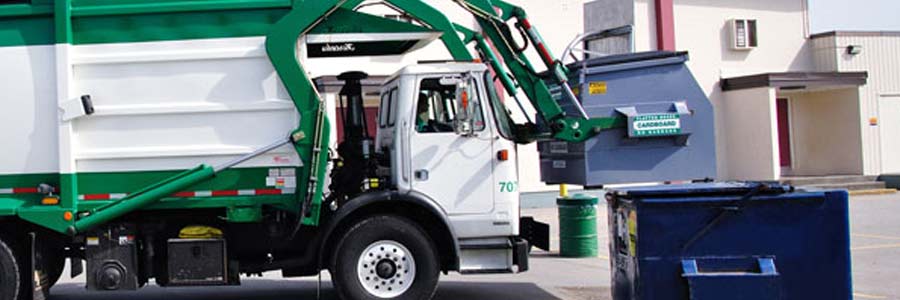October 7, 2021
Running a fleet of company vehicles involves tying up a lot of capital from your business. The vehicle inventory alone costs tens of thousands if not, millions of dollars. And that’s not including driver wages, fuel costs, maintenance costs, and many other expenses that go with operating a fleet for your business.
This is why knowing everything you can about your bottom line is extremely crucial in this industry. Everyone knows the importance of increasing profits. However, getting deep insights into how to reduce fleet expenses and inefficiency can mean the difference between a company’s success, and not being able to survive tougher business conditions.
Fortunately, new technologies have made it incredibly easy for fleet managers to make better decisions when it comes to reducing fleet operating costs.
Fleet Tracking Systems today provide managers with invaluable information that they can use to track their mobile workforce in real-time, access historical data of driver behavior, as well as improve route and fuel management.
By understanding where your vehicles are, where they have been, and how they are behaving, you can create strategies and plans to make better judgments on how to reduce fleet operating costs.
Here are 5 Ways Companies Can Reduce Their Fleet Costs

1. Reduce Unnecessary Use of Vehicles
With a fleet tracking system, managers know exactly where their vehicles are and what the vehicles are doing. When these vehicles are parked in their driver’s homes for the night or over the weekend, unnecessary use can cost hundreds of thousands of extra miles added.
With unauthorized use, your drivers are putting your vehicles at risk for theft, accidents, and added mileage that reduces the vehicle’s resale value and adds to its maintenance costs.
With a tracking system, you can guarantee that your vehicle is safely parked within your company’s premises, and not in your driver’s home.
If they are removed from the company’s premises, the fleet tracking system automatically sends a notification or alarm that the vehicle has been removed without permission.

2. Improve Routes
The route your drivers take has a huge impact on fuel costs. Inefficient routes could be eating up your profits by requiring more fuel, reducing your fleet’s productivity, and negatively impacting your customer service with delays and delivery inefficiencies.
A fleet tracking system provides you with data that you can use to determine which routes consume the most fuel and take the most time. Managers can analyze and plan their vehicles’ journeys to reduce the cost of fuel, improve delivery schedules, and increase productivity. Furthermore, efficient routes add to customer satisfaction.
When you create the fastest, safest, and most cost-effective routes for your fleet, not only do you reduce operating costs, you also improve the company’s performance and reliability.

3. Implement Proper Vehicle Maintenance
Regular vehicle maintenance pays off by avoiding expensive repairs in the long run. Frequent checks and maintenance allow drivers and managers to detect early issues that could be fixed immediately before the damage becomes unrepairable.
Frequent and regular maintenance and repair save fuel, minimizes downtime, and improves equipment lifespan.
With a fleet tracking system, engine performance and condition are also included in the data collected, allowing managers to get a real-time view of their vehicle’s current and historical engine data.

4. Analyze Vehicle Lifecycle
Many senior-level executives view vehicle replacement as an unnecessary cost. They would rather keep old vehicles in operation than to buy a new vehicle. However, this may not be the most economical choice in the long run.
The many costs for retaining and operating aging vehicles could result in excessive costs for maintenance, more fuel consumption, and reduced productivity for day to day operations.
The services your business offers may suffer since some of your vehicles might be inoperational for days due to repairs, causing you to reduce or cease operations.
Keeping and using aging vehicles that are past their optimum economic life is more costly than replacing it with a new one.
With a fleet tracking system, it is easier for managers to determine when it’s no longer practical and economical to repair a vehicle. Managers can, therefore, encourage senior-level managers that putting money on a new vehicle would be the smarter decision for improved fleet management costs.

5. Improve Driver Behavior
The way drivers handle their vehicles places a huge impact on the fleet’s productivity and cost-efficiency.
Reckless driving and speeding could cause damage and high repair costs, and not to mention damage to property and other violation costs.
Idling time is also an issue that causes more fuel consumption. An engine wears out twice as much idling than when it is actually being driven. One hour of idling over the course of a year is equal to at least 26,000 road miles.
With a fleet tracking system, managers can use driver behavior data to educate them about engine idling, speeding, and other risky behaviors. And the fact that managers have a real-time view of driver data discourages drivers from undesirable behavior, improves their productivity, and provides managers with an instant record of their performance on the road.
Fleet companies exist to make a profit. But with rising fuel prices, more competition in the industry, and increased labor wages, the challenges faced by managers and owners require them to create better strategies and implement better policies to stay ahead of the curve.
Reducing fleet operating costs without compromising efficiency and productivity is the challenge faced by so many companies. Fortunately, it is doable by leveraging our expertise, improved policy implementation, and the help of advanced technologies such as a fleet tracking system.
In Summary
Advanced telematics in the form of fleet tracking systems is the key to improved fleet management and reduced costs in the long term.
With more efficient routes, managers can reduce fuel usage, reduce travel time, and reduce downtime; with improved driver behavior, there is less chance of accidents, less vehicle wear, and tear, and improves the vehicle lifespan; and with improved vehicle usage tracking, more accurate employee timesheets are provided, there is less risk of theft and fewer opportunities for unnecessary vehicle usage.
With a fleet tracking system, companies get to enjoy more productivity, better customer service, improved fuel efficiency, an effective fleet, reduced fleet costs, and most of all, an increase in the bottom line.

